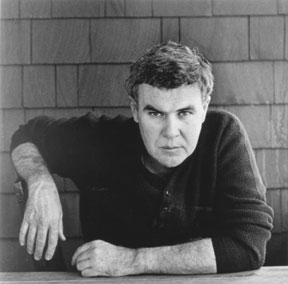 Beloved of 80s MFA students and New Yorker fiction editors, Raymond Carver belonged to neither world. He suffered and drank his way from working-class obscurity to literary fame like another underdog poet and writer, Charles Bukowski (though Bukowski never had, and maybe never wanted, Carver’s cachet). Carver published his first collection of gritty realist stories—Will You Please Be Quiet, Please?—in 1976, when short fiction was largely dominated by the baroque experimentalism of writers like Donald Barthelme and John Barth.
Beloved of 80s MFA students and New Yorker fiction editors, Raymond Carver belonged to neither world. He suffered and drank his way from working-class obscurity to literary fame like another underdog poet and writer, Charles Bukowski (though Bukowski never had, and maybe never wanted, Carver’s cachet). Carver published his first collection of gritty realist stories—Will You Please Be Quiet, Please?—in 1976, when short fiction was largely dominated by the baroque experimentalism of writers like Donald Barthelme and John Barth.
But while Carver perhaps lacked the imaginative exuberance, and early educational opportunities, of a Barthelme, his fiction gave readers something they craved, maybe without even knowing it. A Publisher’s Weekly reviewer of the first collection noted that Carver voiced the “inarticulate worlds of Americans,” the dim ache in the nondescript lives of aspiring students, down-and-outers, diner waitresses, salesmen, and unhappily hitched blue-collar couples. Carver’s approach to quiet desperation is poetic, eschewing flashy postmodernist contraptions for powerfully direct and evocative images. As writer and critic Brian A. Oard puts it:
The Carveresque image allows the reader to glimpse the terrible waste of his characters’ lives (something the characters themselves can sometimes feel but rarely see) and forces the reader to reconsider the entire story in the image’s dark light.
In the audio at the top, you can hear Carver’s friend, writer Richard Ford, read “The Student’s Wife,” from Will You Please Be Quiet Please?, as part of The Guardian’s short story podcast. Ford describes the story as “spare, direct, rarely polysyllabic, restrained, intense, never melodramatic, and real-sounding while being obviously literary in intent.”
“Fat,” another of Carver’s stories from his first collection, conflates two archetypical images of disquiet in the American psyche: obesity and bad marital sex. In a story about excess and longing, Carver’s minimalist restraint lends these commonplaces near-totemic status. Above, listen to the story read by Irish author and memoirist Anne Enright.
Carver, a man of self-destructive appetites, understood the craving of characters like Rita, the waitress in “Fat.” His own desires drove an alcoholism that nearly killed him. Several of his characters share this flaw, including Wes in Carver’s story “Chef’s House,” read above by celebrated short story-ist David Means. Published in The New Yorker in 1981, “Chef’s House” marks the beginning of Carver’s long relationship with the tony magazine.
In 2007, The New Yorker also broke open the myth of the hyper-minimalist Carver, inspiration to thousands of creative writing students, by showing how his streamlined prose was perhaps as much the product of Alfred A. Knopf editor Gordon Lish as of the author. The magazine published Lish’s edit of Carver’s “Beginners,” which became in Lish’s hands the signature story “What We Talk About When We Talk About Love.”
I do not think lovers of Carver need be too dismayed by these revelations. Several well-known works of literature are close collaborative efforts between editor and author. See, for example, T.S. Eliot’s The Waste Land, which we’d never know by that name without Ezra Pound (the famous footnotes were not Eliot’s idea either). And the glittering sentences of Fitzgerald would not shine so brightly without editor Malcolm Cowley. But as The New Yorker alleges, Carver felt forced to accept Lish’s edits. Once he had gained more confidence and success, his prose took on much more expansive qualities, as you can see in the 1983 story “Cathedral.”
The readings above can be otherwise found in our collection of Free Audio Books.
Related Content:
Rare Audio: John Steinbeck Reads Two Short Stories, “The Snake” and “Johnny Bear” in 1953
Kurt Vonnegut’s Eight Tips on How to Write a Good Short Story
Donald Barthelme’s Syllabus Highlights 81 Books Essential for a Literary Education
Josh Jones is a writer, editor, and musician based in Washington, DC. Follow him @jdmagness


Carver did eschew the post modernism of the day but to my mind he strictly applied the Hemingway protocol to “write what you know” and “to use simple language that everyone uses.” This does not diminish his value as an artist: thank goodness someone was doing it! I loved his short stories as a teen and often find them coming to mind. His title What We Talk About When We Talk About Love seems to be some kind of meme — a now familiar construction applied to various subjects besides love.
The audio will not work for me… what is the format?
I could only hear the audio when using Internet Explorer. No sound at all in Safari or in Firefox.